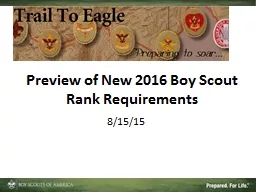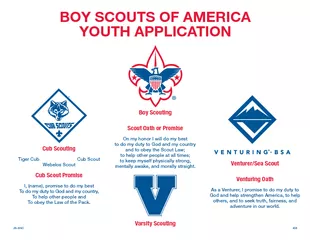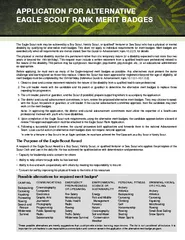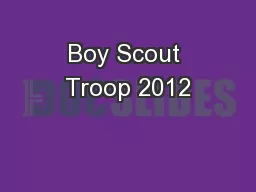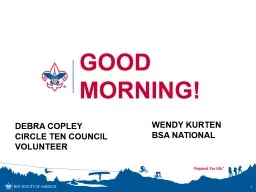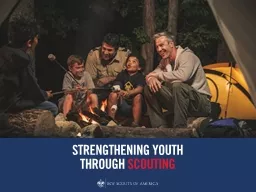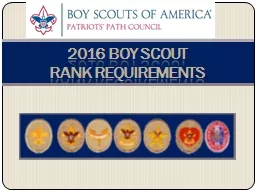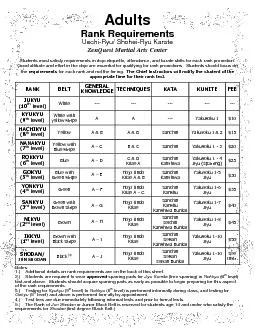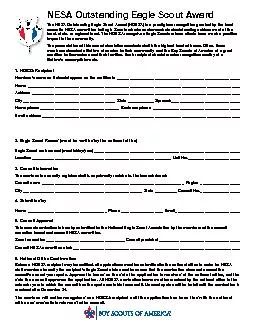PPT-Preview of New 2016 Boy Scout Rank Requirements
Author : calandra-battersby | Published Date : 2019-11-21
Preview of New 2016 Boy Scout Rank Requirements 81515 Replaces Scoutmaster Handbook New Troop Leader Guidebook vol 1 now available Replaces Troop Program Features
Presentation Embed Code
Download Presentation
Download Presentation The PPT/PDF document "Preview of New 2016 Boy Scout Rank Requi..." is the property of its rightful owner. Permission is granted to download and print the materials on this website for personal, non-commercial use only, and to display it on your personal computer provided you do not modify the materials and that you retain all copyright notices contained in the materials. By downloading content from our website, you accept the terms of this agreement.
Preview of New 2016 Boy Scout Rank Requirements: Transcript
Download Rules Of Document
"Preview of New 2016 Boy Scout Rank Requirements"The content belongs to its owner. You may download and print it for personal use, without modification, and keep all copyright notices. By downloading, you agree to these terms.
Related Documents

